Nicaraguan Food Dishes: Basic Overview
Common Ingredients
Common Cooking Methods
Courses
Meals
Key Taste
Eating Etiquette
Meal Presentation
Culinary Festivals
Influence and Fusion
Popular Types of Nicaraguan Dishes
-
Stews
Stews in Nicaraguan cuisine combine a variety of ingredients, such as meats, vegetables, and legumes, simmered in flavorful broths.
These stews often incorporate traditional elements like corn dough to thicken and enhance textures.
At the same time, a blend of local spices and ingredients like sour orange juice and achiote add unique flavors.
-
Fried dishes
Fried dishes in Nicaraguan cuisine utilize ingredients like plantains, yuca, and pork; these dishes are often served as street food or accompaniments to main meals.
The frying technique not only brings out the richness of the ingredients but also adds a satisfying crunch.
-
Desserts
Nicaraguan desserts offer a sweet escape into a world of indulgence, where traditional recipes meet the rich bounty of local ingredients.
From the creamy, soaked layers of tres leches cake to the simple yet delightful arroz con leche, these desserts are characterized by their use of dairy combined with flavors like cinnamon and coconut.
-
Rice dishes
Rice dishes from Nicaragua range from the simplicity of gallo pinto, with its harmonious blend of rice and beans, to more elaborate preparations that mix rice with chicken, pork, or seafood, simmered with various vegetables and spices.
The ability of rice to absorb and complement the flavors it’s cooked with makes these dishes both hearty and comforting.
Nicaraguan dishes are delicacies commonly savored in Nicaragua, a country nestled in the heart of Central America. This cuisine is a vibrant blend of indigenous Miskito cuisine, Creole flavors, and diverse Spanish specialties.
Nicaragua’s culinary landscape heavily relies on locally sourced ingredients such as corn, beans, plantains, yucca, and seafood. Corn, in particular, is a staple, playing a central role in many dishes and serving as a historical link to indigenous traditions.
Typical flavors often balance savory and sweet, with a modest use of spices compared to other Latin American cuisines. Cooking methods vary across the region, with boiling, grilling, and frying the most common.
Another characteristic feature of Nicaraguan cuisine is its communal aspect, where meals often serve as a gathering point for family and friends.
This communal spirit extends to the country’s street food scene, where vibrant markets and roadside stands offer everything from sweet corn-based treats like atoles and güirilas to savory snacks like quesillos and cheese-filled tortillas topped with pickled onions.
Let’s dive into the world of Nicaraguan cuisine! I’ll explore its famous dishes, delve into its traditional food features, discuss its global appeal, and highlight its health benefits. Plus, I’ll cover dining etiquette and tips for pairing dishes and beverages.
Ready to embark on this flavorful journey? Let’s get started!
25 Popular Nicaraguan Dishes with Filters
Below are the 25 most famous dishes from Nicaraguan cuisine, sorted according to their popularity worldwide.
Use the filter option to explore based on ingredients, taste, preparation style, dish categories, and when they’re typically enjoyed. Whether you’re looking for traditional favorites, national specialties, creative fusions, or street snacks, you’ll find something to explore.
Gallo Pinto
- National
- Traditional
Gallo pinto, a Nicaraguan national dish, is a comforting plate of rice and beans mixed together, seasoned with a blend of Nicaraguan spices that give it a unique and savory taste.
It’s a versatile dish, commonly enjoyed at breakfast but also found at other meal times, and can be served alongside various accompaniments such as eggs, cheese, or plantains.
Nacatamal
- National
- Traditional
Nacatamal is a Nicaraguan type of tamale, made from corn dough mixed with lard and broth and filled with a combination of meat (usually pork or chicken), rice, potatoes, tomatoes, and other vegetables.
This mixture is then wrapped in plantain leaves and steamed for several hours. Nacatamales are known for their rich and complex flavor profile, blending savory, spicy, and sometimes slightly sweet tastes.
They are particularly popular during festive times, including Christmas and family celebrations, as a comforting reminder of home and tradition for many Nicaraguans.
Vigorón
- National
- Street Food
- Traditional
Vigorón is a traditional Nicaraguan dish that embodies the spirit of the country’s street food culture.
This vibrant and colorful plate consists of a bed of cabbage salad, topped with boiled yuca (cassava) and a generous portion of chicharrón (fried pork skins), all served on a banana leaf for an added touch of authenticity.
The salad is typically dressed with vinegar or lime juice, adding a tangy contrast to the rich, crispy chicharrón and the soft, mild yuca.
Vigorón is particularly popular in Granada but can be found throughout Nicaragua, often enjoyed as a quick, satisfying meal at markets and street food stands.
Indio Viejo
- Traditional
Indio Viejo, translating to “Old Indian,” is a traditional Nicaraguan stew that takes you through the country’s rich history and culinary traditions.
This dish is a thick, hearty mixture made from shredded beef (sometimes chicken is used), simmered with onions, garlic, sweet peppers, and tomatoes.
Adding masa (corn dough) sets Indio Viejo apart, which thickens the stew and gives it a distinctive texture and flavor reminiscent of tortillas.
The stew is seasoned with achiote and sour orange juice, lending a unique taste that balances earthy, tangy, and slightly spicy notes.
Indio Viejo is often enjoyed during cultural festivals and family gatherings. It’s a dish that feels like a warm hug, filling and deeply satisfying with every spoonful.
Rondón
- Traditional
Rondón is a hearty stew from Nicaragua that brings together coconut milk, root vegetables like yucca and sweet potatoes, and an array of seafood such as fish, crab, and shrimp.
Seasoned with aromatic herbs and spices like thyme, garlic, and chili peppers, Rondón is a culinary journey showcasing the coastal region’s rich, diverse essence.
Each spoonful offers a taste of the sea, complemented by coconut’s creamy sweetness and the vegetables’ earthy depth.
Vaho
- Traditional
Vaho, also known as baho, is a Nicaraguan dish that marries beef, plantains, and yuca, wrapped in banana leaves and steamed to perfection.
The slow steaming process melds the flavors beautifully, resulting in tender meat that falls off the bone, complemented by the sweetness of plantains and the starchy goodness of yuca.
Vaho is typically prepared for Sunday gatherings, making it a staple of family and community celebrations. In addition, it is often hailed as a hangover cure, making it a comforting choice after a night of festivities.
Sopa De Mondongo
- Traditional
Sopa de mondongo is a traditional soup in Nicaragua, centered around tender strips of tripe, slow-cooked in a savory broth brimming with a medley of vegetables and aromatic spices.
The soup’s richness comes from a carefully selected array of ingredients, including onions, bell peppers, carrots, celery, and tomatoes. Spices like garlic, cumin, oregano, and herbs like bay leaves and cilantro are key to a distinctive taste.
Tres Leches Cake
- Traditional
Tres leches cake is a delectable dessert that has found its sweet spot in Nicaraguan festivities and across Latin America.
Characterized by its light, airy sponge soaked in three types of milk: evaporated milk, condensed milk, and heavy cream, this cake offers a moist, indulgent experience.
Often topped with a light meringue or whipped cream and a sprinkle of cinnamon, tres leches cake is a celebration favorite, commonly enjoyed during birthdays, weddings, and other significant events.
Quesillo
- Street Food
Quesillo, a beloved street food in Nicaragua, is a unique dish comprising a thick corn tortilla filled with soft, mozzarella-like cheese, pickled onions, and a special sauce made from sour cream or liquid cheese mixed with vinegar.
The key difference between the two versions lies in the type of onions used; La Paz Centro’s quesillos are known for using purple onions. Commonly sold along roadsides, quesillos are a quick snack and a testament to Nicaragua’s rich street food culture.
Chicharrón Con Chimichurri
- Fusion
- Street Food
Chicharrón con chimichurri is a flavorful combination of crispy pork cracklings paired with chimichurri, a zesty sauce made with herbs, garlic, vinegar, and oil.
This dish skillfully blends local flavors with influences from other Latin American culinary traditions. The chimichurri sauce adds a fresh and tangy contrast to the rich and crunchy chicharrón, making it a popular choice for everyday meals and special occasions.
Arroz Aguado
- Traditional
Arroz aguado is a traditional Nicaraguan stew that offers a comforting blend of tender chicken or pork simmered with an array of vegetables like tomatoes, onions, bell peppers, and garlic, and all melded together with rice.
This dish, which translates to “watery rice,” skilfully bridges the gap between a soup and a rice casserole, creating a dense, flavorful, hearty, and satisfying texture.
Chancho Con Yuca
- Traditional
Chancho con yuca is a beloved dish in Nicaraguan cuisine. It is known for its tender, slow-cooked pork paired with the earthy sweetness of yuca, also known as cassava.
The pork is marinated in zesty citrus juices and spices, making it incredibly succulent, while the yuca is boiled to perfection and then lightly fried to add texture and a subtle sweetness that balances the rich meatiness of the pork.
Churrasco Con Chimichurri
- Fusion
Churrasco con chimichurri in Nicaraguan cuisine is a beloved dish that marries the richness of grilled meat with the vibrant, herbaceous flavors of Chimichurri sauce. This pairing is quite popular across Latin America, with each region adding its own twist.
The Nicaraguan version typically features tender, juicy cuts of meat that have been grilled to perfection, creating a smoky exterior and a succulent interior.
The chimichurri sauce, a green concoction made from finely chopped parsley, garlic, vinegar, oil, and spices, adds a refreshing contrast with its tangy and slightly spicy taste. This dish is often enjoyed at social gatherings and is a staple at barbecues and family dinners.
Arroz Con Pollo
- Traditional
Arroz con pollo is a cherished dish in Nicaraguan cuisine, and it is appreciated for its comforting blend of rice and chicken.
This dish, translating to “rice with chicken,” typically features chicken pieces cooked with rice, often enhanced with various vegetables and spices that infuse the dish with depth and flavor.
Each preparation of arroz con pollo may vary slightly, reflecting the cook’s personal touches, but the dish’s essence remains a staple of Nicaraguan family meals.
Arroz con Leche
- Traditional
Arroz con leche, translating to “rice with milk,” is a sweet and creamy dessert made by slowly cooking rice in milk and sweetening it with sugar, often enriched with a hint of cinnamon and sometimes lemon zest to add layers of flavor.
Arroz con leche is not just a treat in Nicaragua but is enjoyed in various forms across Latin America, each region adding its twist to the recipe.
In Nicaragua, it’s commonly served as a comforting dessert or snack, beloved by people of all ages and often featured during festive occasions and family gatherings.
Tostones
- Street Food
Tostones, a popular side dish throughout Latin America and the Caribbean, including Nicaragua, are slices of unripe plantains fried twice until they reach a golden color and crispy texture.
After the first fry, they’re flattened, which is key to their characteristic shape and texture, and then fried again.
They’re commonly seasoned with salt and can be accompanied by various dips or toppings, depending on the region.
In Nicaragua, it’s not unusual to enjoy them with fried cheese, adding a delightful contrast of creamy and crunchy textures.
Carne Asada
- Traditional
Carne asada, a cherished Nicaraguan cuisine, refers to grilled meat, typically beef, marinated in flavorful spices and then cooked over an open flame.
This dish is a staple at social gatherings and family events, often served with a side of gallo pinto (rice and beans), fried plantains, and a fresh salad, creating a balanced and hearty meal.
Sopa De Albóndigas
- Traditional
Sopa de albóndigas is a Nicaraguan soup that is a comforting and hearty dish made from chicken, various vegetables like yuca and corn, and seasoned meatballs.
The soup is flavored with cilantro, garlic, and orange juice, giving it a distinctive and rich taste.
It’s a traditional dish that often takes a few hours to prepare due to the need to soften the chicken, but the result is a flavorful and satisfying meal that’s perfect for sharing with family and friends.
Tajadas
- Street Food
Tajadas are thin slices of plantains fried until they’re crispy and golden. They’re a common side dish in Nicaraguan cuisine that accompanies various meals.
Tajadas are appreciated for their sweet and savory flavor profile, which comes from the ripe plantains, and their crispy texture makes them a delightful contrast to softer main dishes.
Rosquilla
- Street Food
- Traditional
Rosquillas, a beloved treat in Nicaraguan cuisine, are akin to donuts but come with their unique twist. They’re crafted using flour, baking powder, sugar, salt, eggs, butter or margarine, and lard.
The dough is rolled out, cut into small circles, and then fried until it achieves a golden brown hue. These delightful snacks are versatile, often enjoyed with a sprinkle of sugar or a dash of cinnamon to enhance their flavor.
Salpicón
- Traditional
Salpicón is a staple of Nicaraguan cuisine and typically involves finely chopped meat mixed with lime juice, onions, and other seasonings, offering a refreshing and light taste profile.
This dish is often enjoyed with tortillas or as part of a larger meal, showcasing the simplicity and flavor depth of Nicaraguan cooking.
Carne Desmenuzada
- Traditional
Carne desmenuzada is a beloved Nicaraguan dish featuring tender, flavorful shredded beef, often accompanied by rice, beans, and plantains. The beef is seasoned with a blend of spices, including cumin and oregano, and then simmered until it falls apart easily.
After shredding, it’s mixed back into its cooking sauce, melting the flavors together perfectly. This dish is a Nicaraguan cuisine staple celebrated for its savory taste and comforting qualities.
Güirila
- Street Food
- Traditional
Güirila is a traditional Nicaraguan dish, particularly famous in the Matagalpa region. It’s a sweet tortilla made from young white corn, often enjoyed with crema (a type of cream) and cuajada, a salty Nicaraguan cheese.
The process involves shelling the corn, milling it, and then cooking or grilling the mixture in banana leaves to avoid sticking or burning.
Add sugar or salt is common; sometimes, milk is included, especially by street vendors. Güirilas can be savored with meat or pork or as a snack.
Gallina Rellena
- Traditional
Gallina rellena is a traditional Nicaraguan dish enjoyed during December festivities, including Christmas and New Year.
It involves brining a hen and stuffing it with a mixture that varies by household. Still, it typically contains pork, vegetables (garlic, onions, celery, chayote, carrots, green peppers, potatoes), and binding ingredients like breadcrumbs, milk, wine, butter, mustard, and tomato sauce.
Optional additions include raisins, capers, olives, and dried prunes. It’s served with bread and is central to Nicaraguan holiday celebrations.
Cajeta de Coco
- Traditional
Cajeta de Coco is a traditional dessert that combines condensed milk, grated coconut, butter, sugar, and graham crackers into small, delightful balls.
It is often rolled in coconut or crumbs and presented in special paper cups. This sweet treat is popular in both Costa Rica and Nicaragua.
What Is Nicaraguan Dining Etiquette?
Nicaraguan dining etiquette blends traditional Latin American customs with its cultural nuances, emphasizing respect and community.
Understanding this etiquette enhances the dining experience, making it worthwhile to explore which beverages can complement the flavors of Nicaraguan cuisine.
Which Beverages Best Pair with Nicaraguan Dishes?
Here are some beverage pairings that work well with Nicaraguan dishes:
When pairing refreshing Nicaraguan drinks with dishes, consider the balanced flavors in the meal and choose a drink that will complement or contrast these flavors effectively.
Do these fabulous and unique dishes match your preference? I can’t wait to hear your thoughts in the comment section.
Also, please share this article with your beloved so they can become a foodie expert like you. Thanks for reading, and don’t forget to leave a like!
















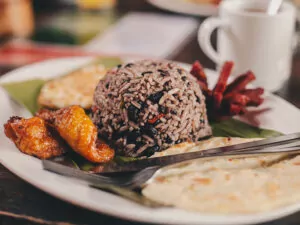
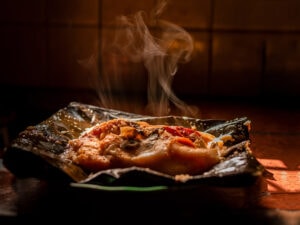
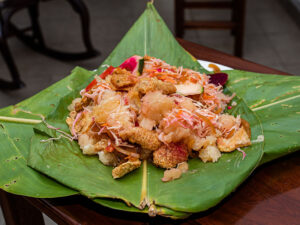
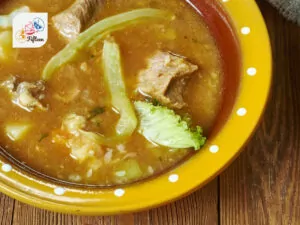
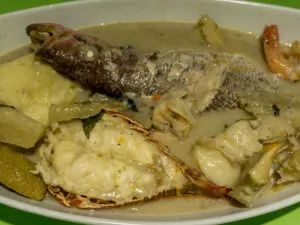

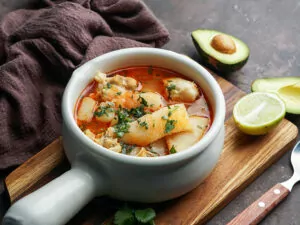

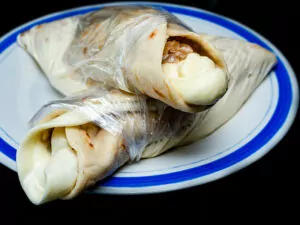
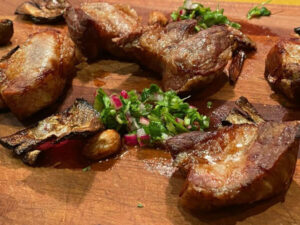
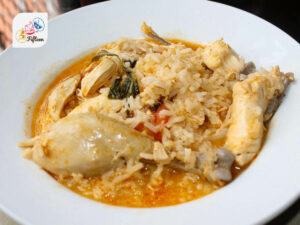
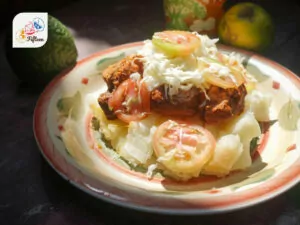
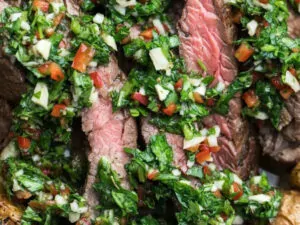
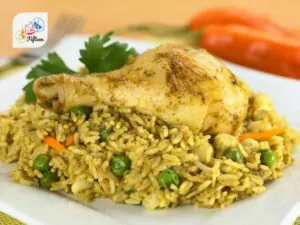
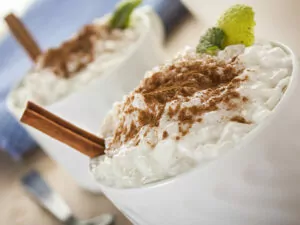
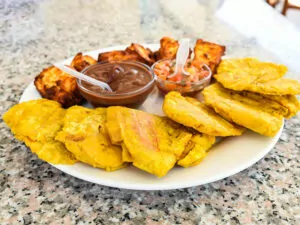
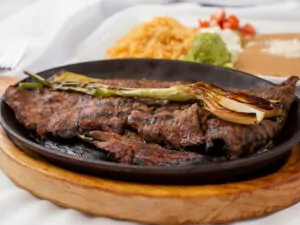
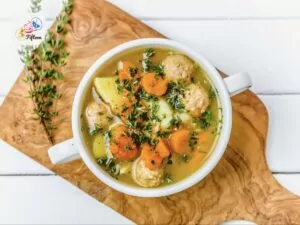
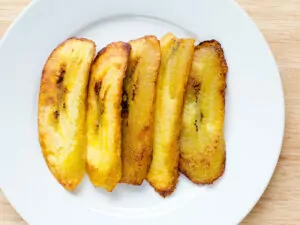
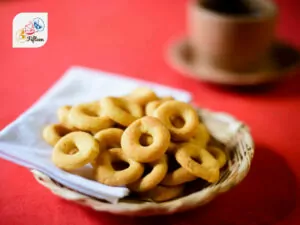
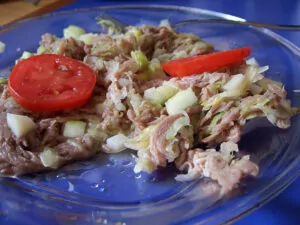
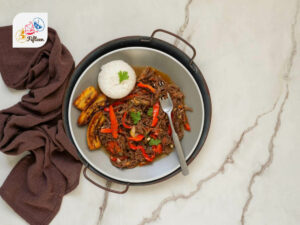
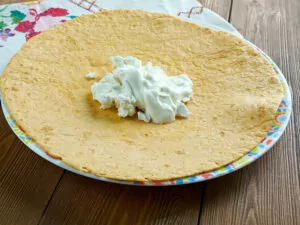
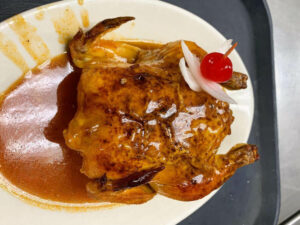
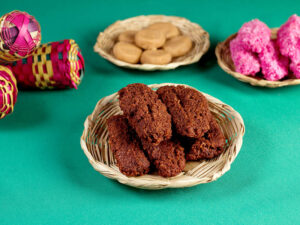
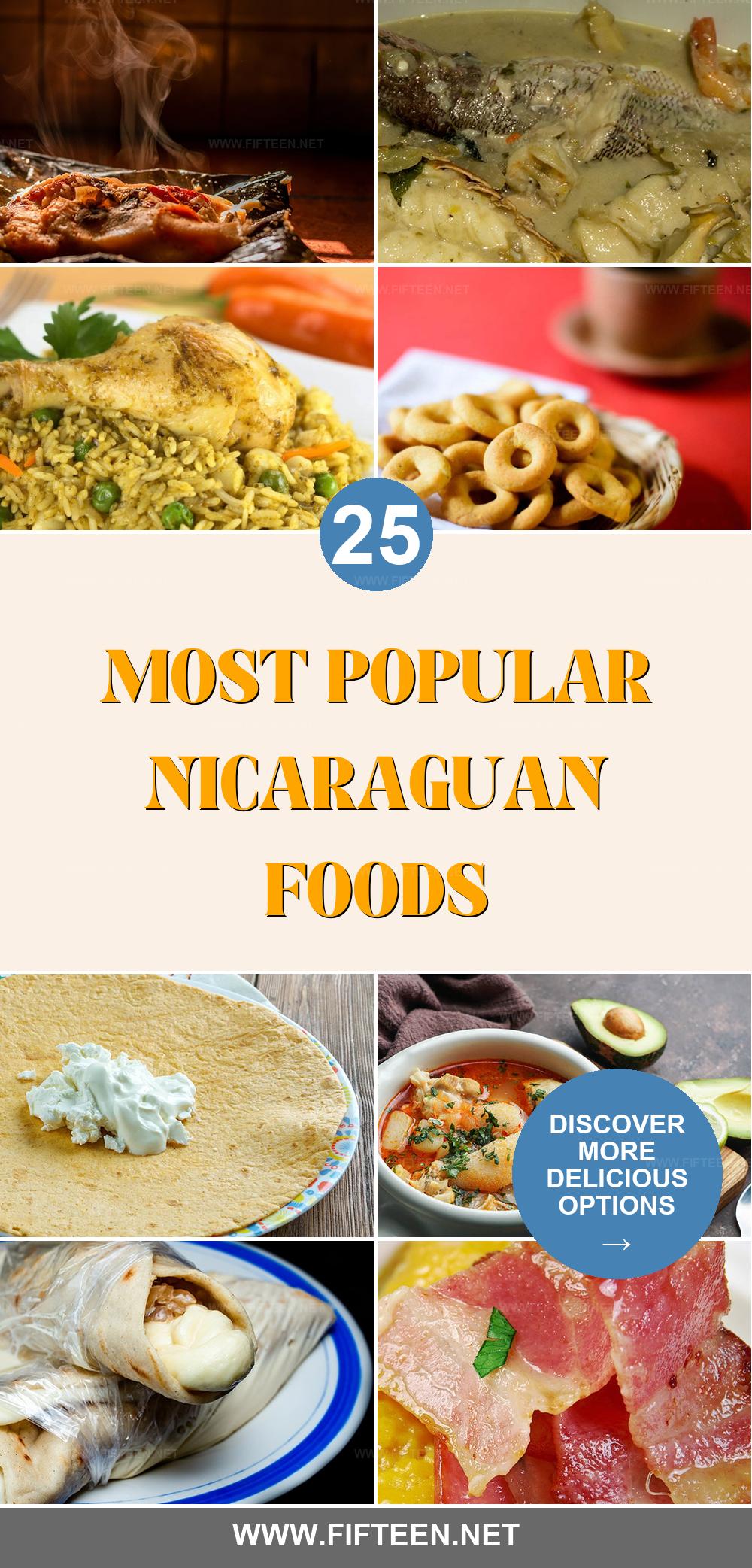
Jamie Scott
Editor in Chief, Senior Content Writer
Expertise
Home Cooking, Meal Planning, Recipe Development, Baking and Pastry, Food Editor, Cooking-video Maker, Western Food Evaluation Expert
Education
Le Cordon Bleu College of Culinary Arts
Local Community College, New York, NY
Jamie Scott is a skilled culinary expert and content creator specializing in Western cuisine. With over 15 years in the culinary field and formal training from Le Cordon Bleu, Paris, Jamie deeply understands how to blend nutrition with delicious flavors. His passion for cooking matches his commitment to making healthy eating accessible and enjoyable.
On Fifteen.net, Jamie brings a fresh perspective to classic dishes and beverages, offering readers insightful recipes, cooking tips, and a fresh view on meal planning that emphasizes taste, health, and simplicity.